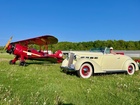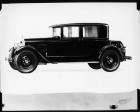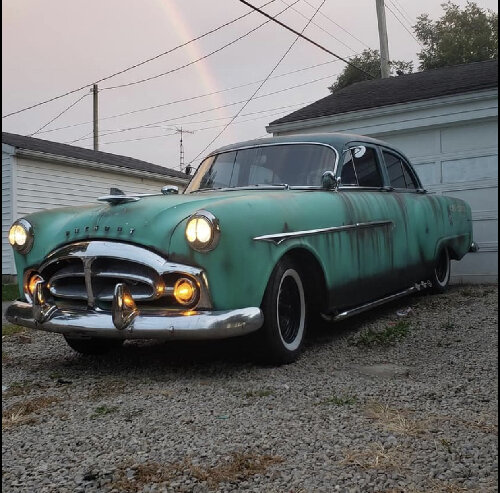|
Re: Now if this could be used to make Packard parts
|
||||
|---|---|---|---|---|
|
Home away from home
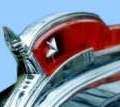
|
Howard, it might look like a difference between your convinction and my mental reservations. In print those differences look bigger than they often are in practice. Like you I'm convinced that the single working steps will work and I agree in principle. These single steps are
- scan and/or to measure up - 3D image postprocessing - fabrication (printer/mill/laser/water jet/...) Nevertheless three things give me a headache: 1) I hasitated to accept the presentation and valuation of the necessary working steps, in other words, I have problems with the video itself that started the thread. Let the ride decide showed us a video made by the world famous National Geographics and as you will see it has a certain justification to accept only under reservation the content of that video. I knew that the step of image postprocessing is very important. The video tries to make us believe we have just to scan and print. My believe is, that this will work for more simple objects but I know that it won't work for more complex objects. More complex objects stringently require the step of image postprocessing. The video publicizes an oversimplification. Ten years later we will have 3D-image libraries that will help us to more or less automatize the image postprocesessing but today it requires several hours and experts like Donald (Don 37) who works in the field of 3D Design reverse engineering to close the gap between the input and the output. C'mon, dream with me of a portable 3D-printer installed in the Packard glove box and connected to the cigarette lighter receptacle. If you don't have a hand-held scanner or autronic eye please don't forget to download the correct parts manual before you start your next trip. Suitable cast compounds are available at the next gas station. 2) I have trouble with the worldwide uncritical adoptation (as seen so far in the internet). Born by juvenile hopes of a perfect world and carried away by own enthusiasm it unfortunately developed all usual signs of group dynamics. People are delighted with the idea of a printable world and would like to share their enthusiasm, probably fueled if not even initiated by the marketing department. Hours do not strike for a happy man in (hypothetical) cashmere jersey but for the engineers the sands are running out to deliver on a marketing cloudscape. That could be one of the reasons that the "3D print community" around the world always print wrenches in a kind of Ponzi scheme. All of them use the same virtual 3d-wrench design to skip the unpleasant (time-consuming) step of image postprocessing. I just wait that people start to print printers.  3) I have strong doubts related to the casting compounds with a suitable mix of metallic properties like flexural strength and thermostability and service life. As long as the talk is of thermoplastics with single properties like flexural strength or thermostability or service life for prototyping I raise no objections but to print a real housing of a waterpump would be again an oversimplification. Howard, I really don't have any reservations related to NC machine tools. They exist and do their work. The necessary input can be done by key input or sensing or data storage device. Ok gents, fasten your seat belts, please! More than 7,300,000 users watched the video. And now take a look at this: <iframe width="500" height="314" src="http://www.youtube.com/embed/1yt8ZZGFkFc" frameborder="0" allowfullscreen></iframe>
Posted on: 2011/8/6 4:52
|
|||
|
The story of ZIS-110, ZIS-115, ZIL-111 & Chaika GAZ-13 on www.guscha.de
|
||||
|
||||
|
Re: Now if this could be used to make Packard parts
|
||||
|---|---|---|---|---|
|
Home away from home

|
BTW He isn't on my payroll.

Posted on: 2011/8/6 5:07
|
|||
|
The story of ZIS-110, ZIS-115, ZIL-111 & Chaika GAZ-13 on www.guscha.de
|
||||
|
||||
|
Re: Now if this could be used to make Packard parts
|
||||
|---|---|---|---|---|
|
Home away from home
|
Gerd,
You never cease to amaze me with your internet detective skills! 
Posted on: 2011/8/6 6:47
|
|||
|
||||
|
Re: Now if this could be used to make Packard parts
|
||||
|---|---|---|---|---|
|
Home away from home

|
Quote:
...but believe I made mention and agreed a few posts ago you could not do intricate internal patterns... Yes, you did and my reply should have been better written without being addressed, my fault. It isn't a major topic, all I want is to entertain. Our dog was operated and can't walk at the moment. Attach file:  (40.44 KB) (40.44 KB)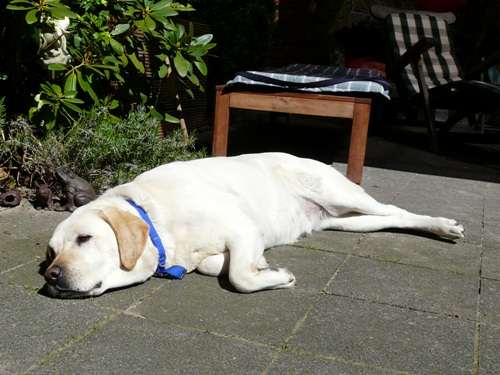  (34.27 KB) (34.27 KB)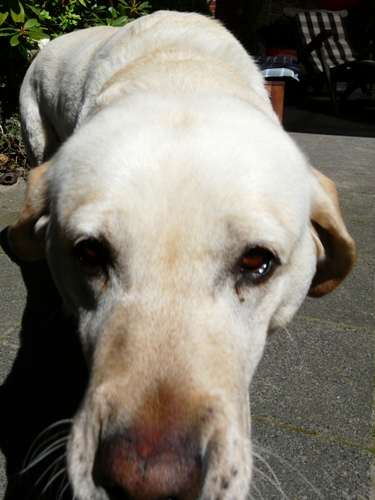
Posted on: 2011/8/6 10:09
|
|||
|
The story of ZIS-110, ZIS-115, ZIL-111 & Chaika GAZ-13 on www.guscha.de
|
||||
|
||||
|
Re: Now if this could be used to make Packard parts
|
||||
|---|---|---|---|---|
|
Forum Ambassador
|
The second picture says" I don't feel like playing now, leave me alone."
Posted on: 2011/8/6 10:33
|
|||
|
Howard
|
||||
|
||||
|
Re: Now if this could be used to make Packard parts
|
||||
|---|---|---|---|---|
|
Home away from home

|
Nice puppy. Is that a Rhodesian Razor back Shepeard???
As for the 3D printer i'm more inclined to find it useful for a parts comparison effort: e.g.: Scan an Olds oil pump for one dimensional file (FO). And then scan a Packard pump for dimensions stored in (FP). Then a program to comapre FO to FP to define any changes needed to the Olds pump to fit/adapt IN PLACE OF the Packard pump. Such an automated utility would allow for modifaction/adaptation of readily avaialble CURRENT PRODUCTION parts for obsolete equipment.
Posted on: 2011/8/6 10:40
|
|||
|
VAPOR LOCK demystified: See paragraph SEVEN of PMCC documentaion as listed in post #11 of the following thread:f
https://packardinfo.com/xoops/html/modules/newbb/viewtopic.php?topic_id=7245 |
||||
|
||||
|
Re: Now if this could be used to make Packard parts
|
||||
|---|---|---|---|---|
|
Home away from home

|
IF we go to any discount auto chain website we can usually find a pic of any part in question, sometimes with dimensions. I am surprised that some enterprising individual or company or club has not yet developed a "data base" of parts with dimensions. Such a data base would allow for comparison of various parts (e.g. Packard oil pump compared to Olds pump) to discover a "part-of-best-fit" from a collection of many other parts stored in the DB.
The problem with reproducing any part from scratch is the ability to monitor or maintane quality control requirements. Sure, some big outfit like Federal Mogul can have high paid inspectors standing over 3rd world manufactuers to insure the process is followed with precision. But for the small-time manufacturer such quality control is not likely. I will hold to the claim that modification/adaptation of readily avaialable off-the-shelf current production parts is the best way to keep vintage tin on the road. Unless of course someone discovers a life time supply of NOS or NORS or oem parts somewhere at bargain basement prices.
Posted on: 2011/8/6 10:57
|
|||
|
VAPOR LOCK demystified: See paragraph SEVEN of PMCC documentaion as listed in post #11 of the following thread:f
https://packardinfo.com/xoops/html/modules/newbb/viewtopic.php?topic_id=7245 |
||||
|
||||
|
Re: Now if this could be used to make Packard parts
|
||||
|---|---|---|---|---|
|
Home away from home

|
"I have trouble with the worldwide uncritical adoptation (as seen so far in the internet). Born by juvenile hopes of a perfect world and carried away by own enthusiasm it unfortunately developed all usual signs of group dynamics."
Amen Guscha!! Amen. Here is a good book for those that like to read: http://en.wikipedia.org/wiki/Extraordinary_Popular_Delusions_and_the_Madness _of_Crowds Chapters could be added to that book on things like e-ignition, Global Footprinting, Carbon Warming, disk brake conversions, vapor lock, Pet Rock, GPS dependence, political correctness, ....,the list goes on.
Posted on: 2011/8/6 11:33
|
|||
|
VAPOR LOCK demystified: See paragraph SEVEN of PMCC documentaion as listed in post #11 of the following thread:f
https://packardinfo.com/xoops/html/modules/newbb/viewtopic.php?topic_id=7245 |
||||
|
||||
|
Re: Now if this could be used to make Packard parts
|
||||
|---|---|---|---|---|
|
Just can't stay away
|
Quote:
The point I tried to make above is that it will be a great time saver for replication of some parts by speeding up the process wherein one must make a pattern to work from in order to produce a final product. When I worked for that foundry they put me in charge of about 50 pieces of heavy equipment that had never had a real heavy equipment mechanic touch them in more than a quarter of a century. The foundry maintenance shop would cobble together repairs but they never really had an in-house heavy equipment mechanic who'd been trained to work on vehicles as opposed to foundry equipment. I found the equipment in terrible condition and set about overhauling just about every piece. One of my major obstacles was age - some of the manufacturers had gone out of business or were no longer producing spares. That's a problem I'm sure is familiar to all here. Consequently, I was forced to fabricate replacement parts in-house. That's how I got to know the guys in the pattern shop. For cast parts, I'd take an obsolete impossible-to-find part to the pattern shop foreman and he'd have one of his guys spend a few days making a pattern from wood and they'd determine the specific density and type of pour formula needed to produce a casting with the same density and strength as the original part. Then I'd take that pattern down to the casting floor foreman, give him the pattern and the specs, and they'd take over. A few hours, or maybe even a few days later, someone would call down to the shop for me to come get my "piece of crap." I'd then take the rough casting over to the machine shop where, using the old part and the parts to be mated to it, they'd determine how it needed to be milled and then they'd bore and/or mill the casting to final tolerances. If necessary they'd turn or shape or cast new bushings, bearings or babbits from brass or bronze. Finally, I'd get my very expensive replacement part and would be able to finish repairing the mover and get the shop foreman off my back by getting that mover moving again. It was labor intensive, time consuming, and, as I've said, extremely expensive when you consider the fact that most of those parts were one-offs. If I'd had this printer device, I could have greatly shortened the pattern making process and literally shaved off days of labor. This would work for forged parts too, because one can produce the pattern needed to create the forging dies in a fraction of the time normally needed. To a certain extent it does work for machined parts. When one is producing large quantities of machined parts the equipment that makes the parts uses pattern followers and spins or shapes dozens of parts simultaneously. A small machine shop owner can replicate such parts using various steels, brass, bronze or aluminum but only one at a time; and, before doing so, must first construct a pattern for his follower. Eliminating the extra time it takes to create that pattern is where this device should be able to shine. If one can quickly and cheaply produce a pattern for the follower with one of these devices and do it for substantially less than it will cost for that machinist to produce the pattern, one is ahead of the game. I agree, this device can't do the internal machining, but I think it has great potential to save gobs of time and money up the point the casting shop, dye maker or machine shop needs to take over. Mike O'Handley Kenmore, Washington
Posted on: 2011/8/6 12:24
|
|||
|
||||

